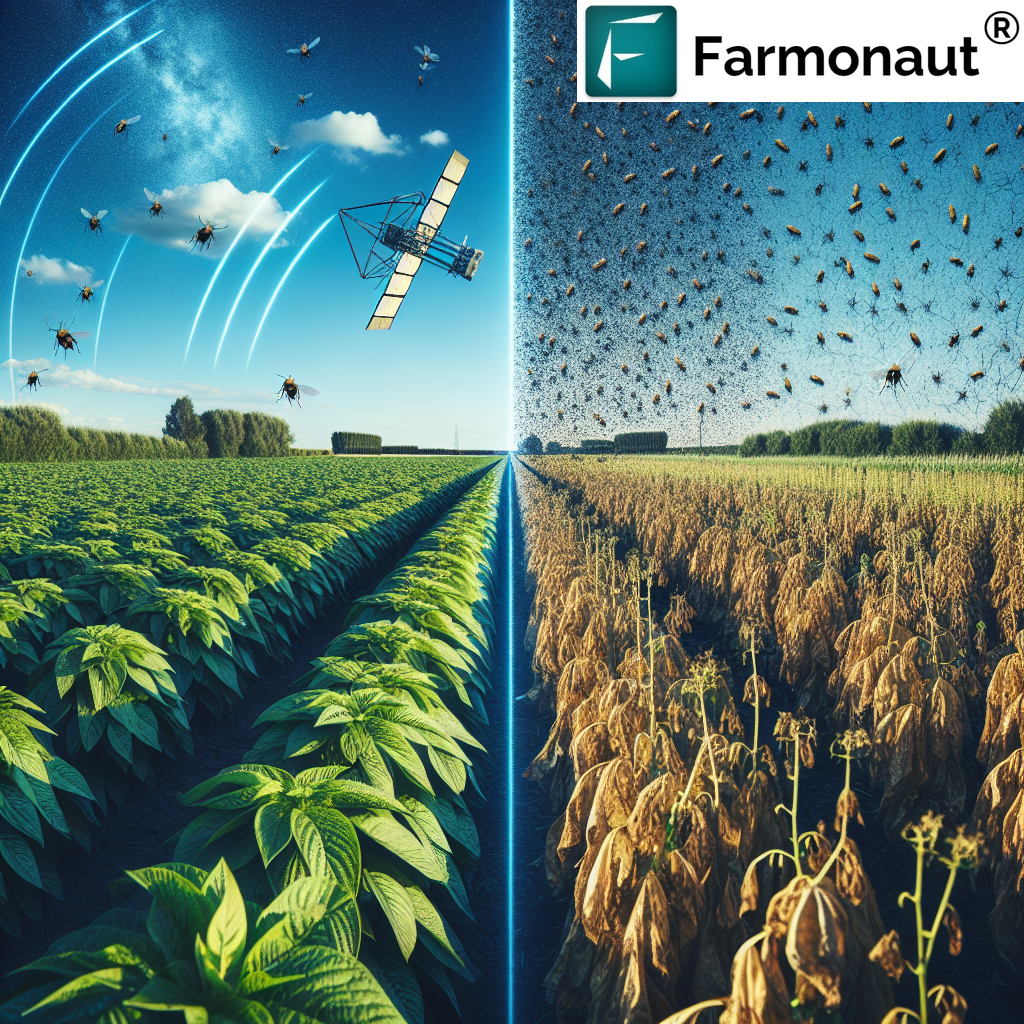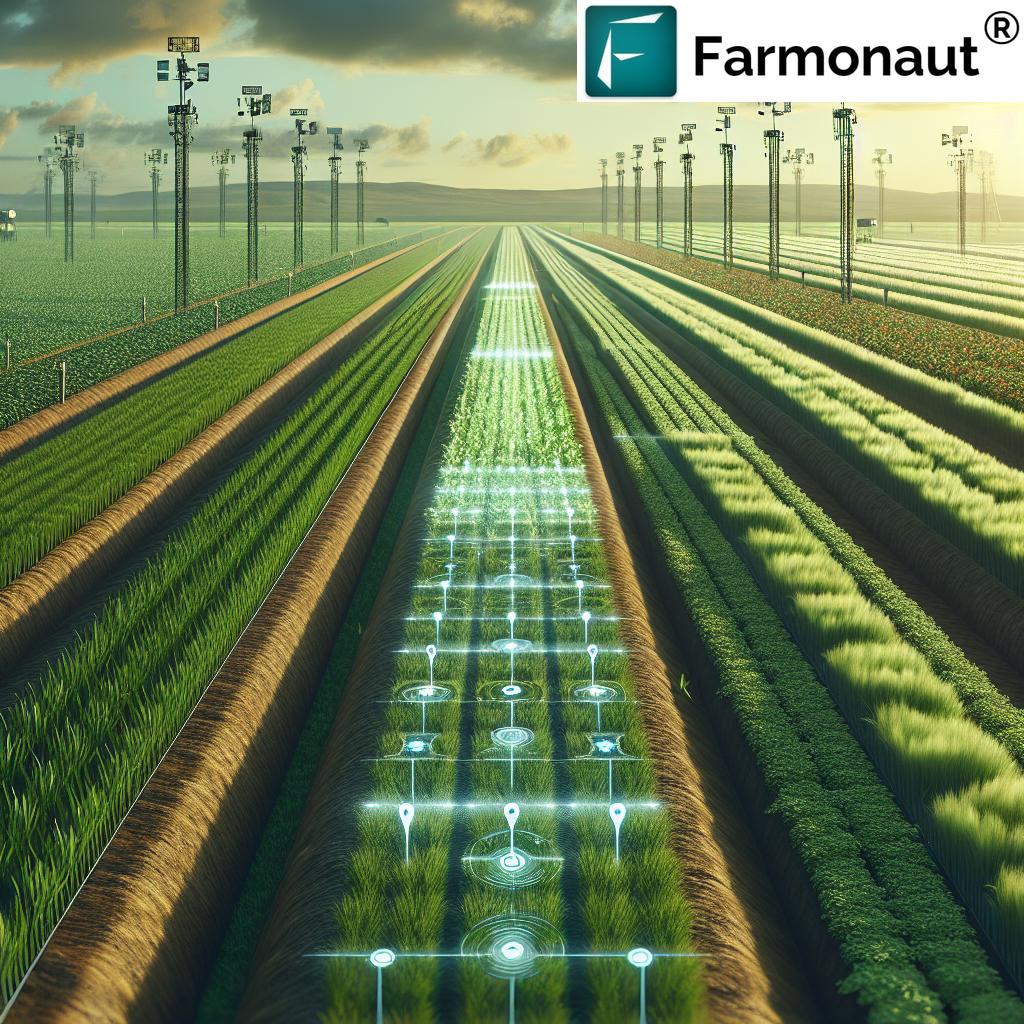What Are the Steps for Farming? 7 Key Methods for 2025
Meta Description: Discover what are the steps for farming in 2025, including land preparation, seed selection, sowing, irrigation, harvesting, and how modern technology optimizes every stage for efficiency and sustainability.
“Over 80% of farms in 2025 use precision seed selection tools to boost crop yields and reduce waste.”
Table of Contents
- Introduction: The Vital Role of Farming and the 7 Key Steps
- Land Preparation: The First Step of Farming
- Selection of Seeds: Setting the Foundation for Success
- Sowing: Precise Planting for Superior Yields
- Irrigation: Smart Water Management in Modern Agriculture
- Crop Protection: Strategies to Safeguard Yields
- Harvesting: Bringing in the Bounty
- Post-Harvest Management: Maintaining Crop Quality
- Comparative Step-by-Step Farming Process Table
- How Technology & Innovation Transform the 7 Steps of Agriculture in 2025
- Farmonaut Solutions: Elevating Modern Farming
- Frequently Asked Questions (FAQ)
- Conclusion: Mastering the 7 Steps for Sustainable Farming Success
Introduction: The Vital Role of Farming and the 7 Key Steps
Farming remains the cornerstone of agriculture, playing a vital role in sustaining human life by providing food, fiber, and raw materials to societies worldwide. With the advent of advanced technology, changing climate patterns, and ever-evolving market demands, understanding what are the steps of farming is more essential than ever, especially as we approach 2025.
For anyone involved in agriculture or those looking to venture into this field, mastering the fundamental steps—also referred to as the 7 steps of agriculture—ensures sustainable practices, efficient management, and optimized yields. These steps outline a comprehensive process that modern farmers follow to improve crop health, reduce losses, and maintain quality and market value for their produce.
The integration of intelligent systems, data-driven insights, and resource-efficient tools has revolutionized the entire agricultural process. Read on as we offer an up-to-date, actionable guide to the steps farming demands in 2025, with clear details, cutting-edge examples, and the latest innovations that are reshaping global agriculture.
1. Land Preparation: The First Step of Farming
Land preparation is the first and most crucial step of farming. A well-prepared field creates the suitable environment for crop growth by ensuring proper soil aeration, drainage, and nutrient mixing. So, what are the steps of farming at this stage?
Key Techniques for Land Preparation in 2025
- Clearing the Field: Removing weeds, rocks, and debris to prevent disease and ensure even growth.
- Plowing and Tilling: Employing plowing (breaking up soil with plows) and tilling (turning the topsoil) improves soil aeration, mixes nutrients, and helps the soil retain water.
- Leveling: Using land leveling techniques—from traditional hand methods to automated tillers—creates a uniform field for precise seed sowing and efficient irrigation.
- Modern Machinery: Tractors, GPS-guided equipment, and automated tillers make land preparation faster and more precise than ever.
Today’s farmers rely on technology for optimal land preparation. Smart machinery increases efficiency, reduces manual labor, and helps improve soil health for higher crop yields.
The 5 Essential Stages of Crop Farming: Visual Insights into Modern Techniques
2. Selection of Seeds: Setting the Foundation for Success
Seed selection is the foundation of a successful crop cycle. Expert seed selection determines germination rates, potential yield, and overall crop health. The right seed should match your soil type, climate, and target market needs.
2025 Trends in Seed Selection:
- Genetically Improved Seeds: Drought-resistant, pest-tolerant, and climate-adapted seed varieties.
- Certified Seeds: Ensure better germination rates and minimal disease transmission.
- Precision Tools: Farmers increasingly rely on digital and AI-backed selection systems to choose what’s best for their soil and field conditions.
- Market-Informed Choices: Seed selection considers market demand and consumer preferences, influencing what varieties are planted.
Effective Seed Selection for Various Climates: Canada’s 2025 Innovations
“Modern irrigation systems in 2025 can save up to 50% more water compared to traditional farming methods.”
3. Sowing: Precise Planting for Superior Yields
Sowing, the process of planting seeds in the prepared field, marks the launch of the crop growth phase. It demands precision, uniform distribution, and careful monitoring of depth and spacing for each seed.
- Methods: Manual Sowing for smaller farms, and advanced drills and planters for larger fields, allow uniform placement.
- Modern Tech: Machine-guided seed drills, GPS trackers, and drones for precision sowing deliver better emergence and optimize use of soil nutrients.
- Smart Sowing: AI and IoT tools help farmers monitor soil moisture and adjust placement and spacing in real time.
AI Drones & Precision Sowing: Saving Farms; Ensuring Higher Crops ?
4. Irrigation: Smart Water Management in Modern Agriculture
Irrigation is the consistent and precise application of water to the field. Modern irrigation systems improve water-use efficiency, maximize crop yields, and ensure sustainable farming practices.
Key Trends for Irrigation in 2025
- Drip Irrigation: Directly delivers water to root zones, reducing waste.
- Sprinkler Systems: Evenly waters field surfaces for optimal crop growth.
- IoT Sensors & Precision Irrigation: Advanced, data-driven systems monitor soil moisture and adjust water application as needed.
- Remote Control: Allows adjustments from anywhere, improving both convenience and sustainability.
Solar-Powered Irrigation: Revolutionizing Water Management in Malawi, 2025
5. Crop Protection: Strategies to Safeguard Yields
Crop protection is essential for defending against pests, diseases, and weeds—all common threats that can dramatically reduce crop yields and quality.
In 2025, integrated and sustainable crop protection practices include:
- Integrated Pest Management (IPM): Combines biological controls (beneficial insects), chemical treatments (targeted pesticides), and cultural practices (crop rotation).
- Biopesticides: Natural alternatives for safer environmental impact, reducing dependence on synthetic chemicals.
- Data-driven Disease Monitoring: Platforms use satellite data and AI analytics to detect early outbreaks and recommend timely interventions.
Protecting Crops in the Modern Age: Guide to Reducing Losses
Bio-Pesticides Innovation: 2025’s Environmentally Friendly Plant Protection
6. Harvesting: Bringing in the Bounty
Harvesting is the process of collecting mature crops from the field at the right time to maximize crop quality and yield. Mistimed harvesting can lead to significant losses, reduced food quality, and market value impact.
- Timing: Monitoring systems powered by AI, satellite imagery, and drones now predict optimal harvest times.
- Mechanization: Combine harvesters, threshers, and automatic pickers allow modern farms to efficiently bring in crops with minimum labor.
- Remote Monitoring: Tech platforms help farmers monitor field readiness and minimize post-harvest losses.
Satellite Crop Health Monitoring in Action: The Future of Smart Harvests
7. Post-Harvest Management: Maintaining Crop Quality
What are the steps of farming after harvesting? Post-harvest management is essential for preserving crop quality, reducing waste, and maintaining market value.
- Drying & Cleaning: Immediate processing to avoid spoilage and prepare for market.
- Packaging: Modern, eco-friendly options improve shelf life and presentation.
- Cold Storage: Temperature-controlled storage prevents deterioration and maintains freshness.
- Digital Tracking: End-to-end traceability and digital supply chain management ensure farm-to-market transparency.
Post-Harvest Innovations: Techniques to Reduce Losses
Comparative Step-by-Step Farming Process Table
| Step Name | Traditional Method | Modern Method 2025 | Estimated Efficiency Increase (%) | Estimated Cost Savings (%) |
|---|---|---|---|---|
| Land Preparation | Manual plowing, animal-drawn tools, hand-weeding | Automated tillers, GPS tractors, precision lasers | 40–50% | 25–35% |
| Seed Selection | Saving seed from previous harvest, visual inspection | AI-driven, certified seeds, genetic testing, digital selection tools | 35–45% | 20–30% |
| Sowing | Broadcast/manual, inconsistent depth/spacing | Seed drills, GPS sowing, drone planting, real-time monitoring | 40–60% | 30–40% |
| Irrigation | Flood/surface irrigation, visual soil checks | Drip/sprinkler, IoT moisture sensors, remote-controlled pumps | 50–65% | 40–55% |
| Crop Protection | Routine spraying, guesswork disease management | AI/remote diagnostics, biopesticides, satellite/IoT detection | 30–50% | 20–35% |
| Harvesting | Manual collection, basic equipment | Combine harvesters, AI drones for readiness, GPS guidance | 45–60% | 25–40% |
| Post-Harvest Management | Open-air drying, manual sorting, basic packaging, no traceability | Automated sorting, cold chain logistics, blockchain traceability | 50–70% | 45–60% |
How Technology & Innovation Transform the 7 Steps of Agriculture in 2025
Modern Farming Steps: Technology’s Impact at Every Stage
Each of the 7 steps of agriculture has been transformed by technology and data-driven tools:
- Land Preparation: AI-guided modeling predicts soil health, optimizing tillage and nutrient application for maximum yield potential.
- Seed Selection: Blockchain-based traceability ensures only certified, high-quality seed varieties enter the supply chain. AI tools analyze historic and real-time data for low-carbon options.
- Sowing: Machine learning predicts best sowing times and depth based on field data and weather forecasts.
-
Irrigation: Smart sensors and remote controls save 50% more water compared to old methods.
Farmonaut’s large-scale farm management platform allows complete remote operation and optimization of irrigation, sustainability, and logistics. - Crop Protection: Early detection systems enable farmers to respond swiftly, limiting losses and reducing chemical usage.
- Harvesting: Drones and predictive analytics highlight the exact harvest window for each field, cutting waste and boosting profits.
- Post-Harvest: Blockchain-powered traceability maintains food quality through digital monitoring and modern cold chain logistics.
Farmonaut Solutions: Elevating Modern Farming
At Farmonaut, we empower farmers, businesses, and agricultural managers with advanced satellite-driven insights across all steps of the farming process. Our platform leverages satellite imagery, AI analytics, blockchain traceability, and resource management tools to optimize each of the 7 steps of agriculture for the realities of 2025 and beyond.
Here’s how we contribute across the steps farming requires:
- Real-time Monitoring: Multispectral imagery to assess soil conditions, vegetation health, and field readiness—crucial for effective land preparation, sowing, and irrigation (Try Farmonaut Agro Advisory).
- AI Advisory (Jeevn AI): Personalized recommendations for seed selection, crop targeting, and resource planning—improving efficiency and sustainability.
- Blockchain Traceability: Ensures seed and crop origin validation, adds trust and transparency to post-harvest management (Learn about Traceability).
- Resource Management: Optimize the logistics of irrigation, harvesting, and fleet for efficient operations (Fleet Management Solutions).
- Environmental Impact: Satellite-based carbon footprint monitoring tools help stakeholders adopt sustainable practices, efficiently manage records, and comply with regulations.
- Financing Access: Satellite verification streamlines crop loan and insurance approval, reducing fraud and enhancing farmer support.
For developers: Access Farmonaut Satellite API (Developer Docs) to integrate satellite insights into your own agricultural, mining, or infrastructure systems.
Frequently Asked Questions (FAQ) About the Steps of Farming
1. What are the steps of farming in 2025?
The essential steps include: Land Preparation, Selection of Seeds, Sowing, Irrigation, Crop Protection, Harvesting, and Post-Harvest Management.
2. Why is land preparation so crucial?
Proper land preparation ensures soil health, improves nutrient availability, and allows for uniform planting—setting the stage for robust crop growth and higher yields.
3. How do modern farmers select seeds?
In 2025, farmers use genetically improved seeds, digital selection platforms, and integrate data on climate patterns, soil type, and market demand for optimal results.
4. What types of irrigation systems are popular today?
Drip irrigation, sprinkler systems, and IoT-based smart irrigation save water, energy, and labor, making them the preferred choices for modern farms.
5. How does Farmonaut help with crop protection?
Our real-time monitoring and AI-based advisory systems detect early signs of pest and disease outbreaks, enabling farmers to act quickly and limit yield losses.
6. What are some effective post-harvest management practices?
Modern farms use cold storage, digital supply chain management, and blockchain-based systems to reduce losses and ensure quality.
7. How does technology increase farming efficiency?
By integrating AI, satellites, IoT, and blockchain, technology enables data-driven decisions, reduces waste, increases yields, and allows for precision management at every stage—from planning to harvest and beyond.
Conclusion: Mastering the 7 Steps for Sustainable Farming Success
Understanding what are the steps for farming is more than just recalling the sequence from land preparation to post-harvest management. It is about implementing modern, sustainable practices—often powered by technology and big data—to ensure reliability, resilience, and profitability in a rapidly changing agricultural landscape.
In 2025, the collective adoption of new techniques, precise management systems, and efficient, sustainable tools is transforming how food is produced for a growing world. Whether you’re a smallholder farmer or manage an extensive agribusiness, knowledge, and application of these 7 key steps of agriculture are vital for success.
Leveraging solutions like those developed by Farmonaut provides invaluable insights and operational advantages at every step—from the first breaking of the soil to delivering quality food in the market. The future of farming is intelligent, integrated, and sustainable.
Ready to optimize your farm, field, or agribusiness in 2025? Download the Farmonaut app for end-to-end agricultural intelligence, or click here to get started on your journey toward resilient farming today!














